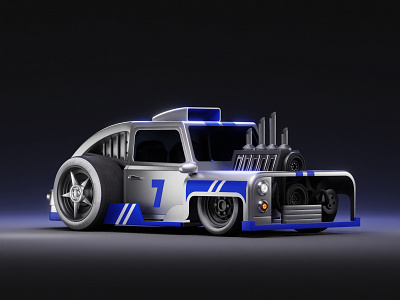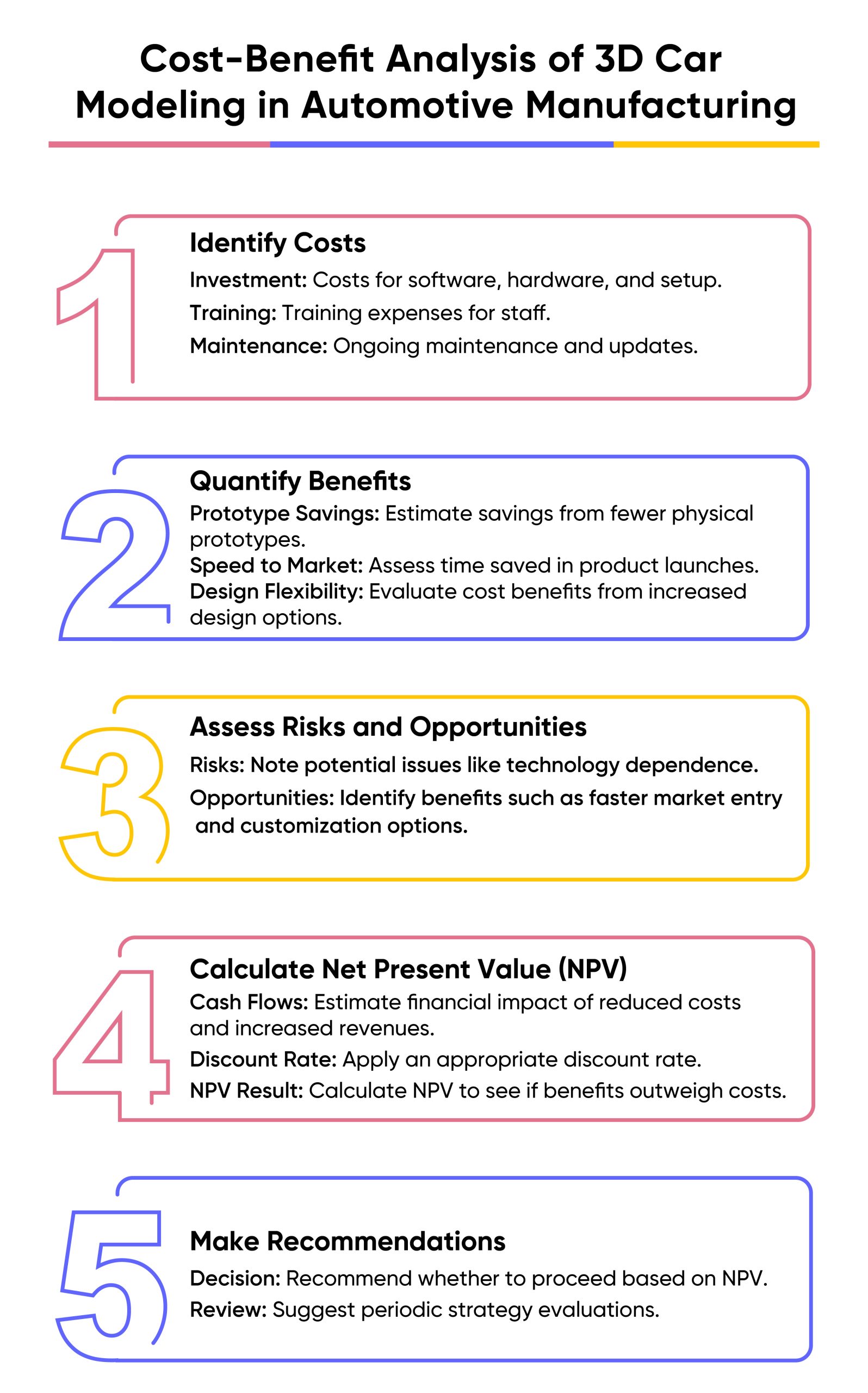The Art and Science of 3D Car Modeling Animation

3D car modeling animation is innovative for visualizing automotive ideas and concepts. It allows designers, engineers, and marketing teams to create detailed, interactive representations of vehicles before they even hit the production line. This technology is not just a tool; it’s a canvas for creativity, precision, and innovation.
The Essentials of 3D Car Modeling Animation
3D car modeling animation combines artistic design with technological innovation, turning ideas into visually stunning animations that can showcase every aspect of a vehicle’s design and functionality. But how does this process work, and why is it so important in today’s automotive industry?
- Visualization: Before a single physical model is built, 3D animations allow designers to explore different aesthetics and functional aspects of a vehicle.
- Simulation: Animations can simulate how a vehicle behaves in various environments, testing aerodynamics, and functionality.
- Revision and Refinement: Digital models are easily adjustable, allowing designers to experiment with changes quickly and economically.
Step-by-Step: The 3D Car Animation Process
The process of creating a car through 3D animation involves several meticulous steps, from initial sketches to the final animated model. Here’s a breakdown of this complicated process:
- Concept Sketching: Every great creation begins with a sketch. Designers draft multiple views of their vehicle concepts, focusing on both aesthetics and functionality.
- 3D Modeling: Using advanced software, these sketches are transformed into 3D models. At this stage, every detail from the curve of the hood to the tread on the tires is crafted.
- Texturing: This involves applying surfaces and materials to the 3D model. The right texture can make a digital car look strikingly real.
- Rigging: Just like in robotics, rigging in 3D modeling involves adding a skeletal structure to the model. This step is crucial for enabling realistic movement and animation.
- Animation: Here, the rigged car models are put into motion, simulating real-world physics and movements.
- Rendering: The final step where all the visual elements are processed to produce the final animation that shows the car in all its glory.
Comparative Analysis of 3D Modeling Software
Choosing the right 3D modeling software is a critical decision for any aspiring animator, especially in the specialized field of car modeling. With several options available, each offering unique features and benefits, it can be challenging to decide which tool best fits your needs. Let’s take a closer look at some of the most popular tools in the industry: Autodesk Maya and Blender.
Autodesk Maya
Features:
- Complexity and Control: Maya is renowned for its advanced features and fine control over modeling and animation details, making it a favorite among professionals in the film and automotive industries.
- Extensive Plugin Support: It supports a wide range of plugins and custom scripts, allowing users to extend its capabilities according to their project needs.
- Industry Standard: Being an industry-standard software, learning Maya opens up numerous professional opportunities and is often a required skill for many high-level jobs in animation.
Cons:
- Cost: Maya is one of the more expensive options, which might not be suitable for individuals or small studios on a tight budget.
- Learning Curve: The vast array of features comes with a steep learning curve, potentially overwhelming for beginners.
Blender
Features:
- Cost-Effective: Blender is open-source and free, making it an excellent option for students, hobbyists, or small studios looking to cut costs.
- Versatility: It offers a comprehensive suite of tools for modeling, rigging, animation, rendering, and even video editing.
- Community and Updates: Blender has a strong community and frequent updates, providing a wealth of tutorials and forums for troubleshooting and learning.
Cons:
- Perception: Despite its powerful capabilities, Blender can be perceived as less professional compared to industry-standard tools like Maya. This perception can influence hiring decisions in some sectors of the industry.
- Integration: Blender might face challenges in integration and compatibility with other industry-standard software, which can be a hurdle in workflows that rely on multiple software solutions.
Decision Factors
When deciding between Autodesk Maya and Blender, consider the following factors:
- Your Career Goals: If you aim to work in top-level animation studios or industries that specify knowledge of Maya, investing time and resources in learning Maya might be beneficial.
- Budget Constraints: If you are experimenting or working independently without the need for complex integrations, Blender could offer a cost-effective yet robust solution.
- Project Needs: Consider the scope of your project. For high-end, commercial-quality animations with specific requirements for customizability and precision, Maya might be more suitable.

Table: Key Tools Used in 3D Car Modeling Animation
| Tool Name | Purpose | Benefits |
| Autodesk Maya | 3D modeling and animation | Highly customizable, versatile |
| Blender | 3D modeling, texturing, rigging | Open-source, cost-effective |
| Unity | Real-time 3D animation | Great for simulations |
| Adobe Substance | Texturing | Realistic materials and surfaces |
| Houdini | Advanced animation | Powerful dynamics and effects |
Practical Uses of 3D Car Modeling in the Industry
The use of 3D car modeling animation spans several practical applications, each helping to streamline processes within the automotive sector.
- Design and Development: Teams can collaborate more effectively, with designers and engineers sharing interactive 3D models to refine products.
- Marketing and Sales: Car animations are often used in advertisements, providing potential buyers a detailed look at a vehicle’s features even before it’s available in showrooms.
- Customer Engagement: Interactive 3D models on websites allow customers to customize their vehicle’s color, features, and more, enhancing the buying experience.
- Training and Simulation: 3D animations help in creating detailed training materials for automotive engineers and technicians.
Challenges and Solutions in 3D Car Modeling Animation
While 3D car modeling animation is a powerful tool, it comes with its own set of challenges which software video animation services faces.
Here’s how professionals are tackling these issues:
- Complexity in Details: The more detailed a model, the more time and resources it requires. Automating certain tasks, like texturing, using AI can reduce this burden.
- Hardware Requirements: High-quality 3D animations require powerful hardware. Cloud-based rendering solutions are making high-quality animations more accessible.
- Skill Gap: As the technology develops, there is a constant need for skilled professionals. Ongoing training and education programs are vital.
Conclusion
In the automobile sector, 3D car modeling animation is a potent tool that can be used to create immersive experiences, push boundaries, and reinvent conventional design methods. It is essential for design, marketing, consumer interaction, and training and covers everything from concept sketching to modeling, texturing, rigging, animation, and rendering. Complexity, hardware requirements, and a skills shortage are just a few of the problems that drive ongoing invention and solutions. Choices of software like as Blender and Autodesk Maya demonstrate how flexible the technology is by meeting a range of professional and financial requirements. The continuous advancement of 3D modeling suggests a time when innovation and technology will combine to increase the opportunities in automotive design, bringing about important breakthroughs and wider uses in domains like virtual reality.
FAQs
Q 1: What software is best for beginners interested in 3D car modeling?
Blender is highly recommended for beginners due to its user-friendly interface and the fact that it's free.
Q 2: How long does it take to create a full car animation?
It depends on the complexity, but typically it can take anywhere from a few weeks to several months.
Q 3: Can 3D car animation be used for virtual reality experiences?
Absolutely, 3D car animations are often used in VR to provide immersive experiences, especially at automotive exhibitions.
Q 4: Are there careers solely dedicated to car animation?
Yes, many professionals specialize in various aspects of car animation and the car assembling process animation, focusing on industries from entertainment to automotive design.
Q 5: What future developments can we expect in 3D car modeling?
Future trends are likely to involve more integration of VR and AR, enabling even more interactive and immersive design and testing environments.
Q 6: How is 3D animation used in the automotive industry?
3D animation in automotive design and marketing facilitates realistic visual simulations and dynamic presentations, streamlining the development and promotional processes.










